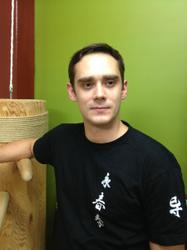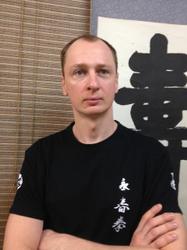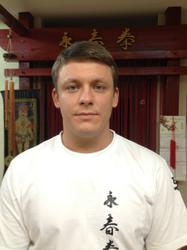The path of the warrior
Alexander Safonov
“There is no life lonelier in the whole world than that of the warrior. It can only be compared to the solitude of a tiger in the jungle.” This is how a warrior's life was described by the medieval author of Busi Do’ (the sacred writings of the Japanese samurai).
The terms To or Tao mean the way’. It is not only a procces. It is the practice of something with a useful application. It is also connected to religious and philosophycal principles, creating the foundation of two large separate teachings of South-East Asia: Buddhism and Taosism. Tao is a universal and common rule of existence: “Everything in the world is on a journey, one of motion and change...”
Buddhism and Taoism were an ideological and phsychological basis for early martial arts schools which appeared in Ancient China (and later in Vietnam, Korea, Japan and other countries of this region).
Buddhism, (i.e. Chan-Buddhism) relates to the Shaolin branch’, formed in the Shaolin Temple in the Henan province. A dynamic variation of Tao called Nen Gun’ became the building block for the Udan branch’, formed high in the Udan-Shan mountains, a place adored by the Tao hermits.
For martial arts schools of both branches the definition of Path’ means the practice of self- and outer world descovery at its core. The school of martial arts didn't just alter the skills (with and without weapons) but maintained a school life, entering which a person was getting an opportunity to develop his essence and to be reborn physically, phsyhologically and spiritually.
Such rebirth was only possible by complying with a number of conditions. A person had to become a student of the school voluntarily’. He must remember that he came to study, to make efforts and to learn how to learn. This enabled them to tolarate even the roughest form of discipline. Another important factor was the teacher's ability to transmit his own experience, to take responsibility for his student and to be an example for him in everything. No miracles happen in school, except the miracles which are brought to life by discipline and self-discipline, consistency of effort as well as patience. Each teacher, in wishing to pass the schools’ tradition on to the student, must manage to wake the Master sleeping’ in his student. After the finishing of a particular stage or task, a student had to leave the school and get on his feet! He was required to find his own path’, in a direction authorized and shown by the school's path. So it is very possible that the author of the quotation from the Busi-Do’ code, speaking about the warrior's solitude, referred not to the external state but, rather, to social rejection and scorn in relation to social and ethical norms of society. The warrior's solitude is an internal state, meaning constant self-improvement, on forming ones own opinion and own methods of solving situations' problems. It is the search for the meaning of life and death.
The Chinese form of Wing Chun martial arts belongs to the Shaolin branch of martial arts. The first mention of Wing Chun was in the middle of the 17th century. The foundation of Wing Chun is to constantly work in pairs, where the development and change of the body’s qualities meaning mastering technical skills. As a school of Chan-Buddhist tradition, Wing Chun requests attention, a skill to instantly and intuitively solve any tasks in rapidly changing hand-to-hand combat situations.
Sharing a border with China, Vietnam has a Wing Chun form which was brought over by the Chinese Master, Te Kong, in the mid 1940s. He had eight students, but only two achieved full success. Tracing lines from one of them (well known and highly respected Vietnamese Kung-Fu Master, Chan Van Fung) the tradition’s successors were its Masters: such as Dyk Mai An Chau and Nguyen Hong Tu (lived and taught in Cherkassy city, Ukraine, for seven years). His work complied with the old Wing Chun tradition and was taught in closed circles of students. Now all of his one-time students follow their own path, generally following the traditions of the family branch Tyeu Lam Fat Son’, which remained unchanged as Wing Chun did. This family branch is maintained by Sergey Ryabtsev, who is a great martial arts talent and possesses a deep understanding of Wing Chun forms. A group of Nguyen Hong Tu followers, connected with the family of Wing Chun Masters in Hanoi, through Valeriy Pavlovskiy, acquired Kung-Fu’s secrets under the leadership of all three leading Hanoi Masters. During our last trip to Vietnam, at the beginning of 1998, the teacher Nguyen Hong Tu was awarded with an ancient school relic; the sword of the Master Te Kong. He was given this sword as a sign of confirmation that Wing Chun’s spirit has been acquired by him.
This sword is one of the traditional pair of Shaolin weapons and was inherited from Master Te Kong by his student Van Fung, who then passed it on to his student Mai An Chau.
Valeriy Pavlovskiy provided the Masters' answers to several questions, as follows:
What does the term family school mean’?
Mai An Chau: - In China, Vietnam, Korea, Japan and other South-East Asian countries there are two ways of passing down the knowledge of the so-called family schools’. First of all there is the traditional method where knowledge is passed down through the generations but only within a family circle. There exists a risk of losing the very essence of the school’ because not all family members have the ability or the wish to learn Kung Fu.
The second case involves knowledge being passed to those who wish to know!
What is your opinion on modern schools and Kung Fu branches?
Mai An Chau answers: “What is known to the wider public about Kung Fu is only its external form, but not its content. Very many studying Wing Chun or any other form of Kung Fu begin to judge the school based only on its moves. They are forgetting about its origins. They do not seem to know that, at Wing Chun’s core, lies Tao Fat’ (a form of Buddhism, which in its essence is varying and formless). This is one of Wing Chun’s main principles: fluctation and formlessness. In martial arts, like in other human activities, ones individuality is valued, rather than copied recklessly. Two Kung Fu Masters may teach their followers differently, even though they themselves were taught by the same Master. The form is different but the content is the same.
Inside Kung Fu there are different directions such as martial, magical, spiritual and health improving. Any one of these directions demands respect. What matters is the personal choice of path.”
What is the Tao Fat’ role in the development of the Wing Chun school?
Mai An Chau answers: “All the rules and principles of Tao Fat are primary principles in Wing Chun. The technique feels spiritually.”
While watching a video film of the Hong Kong Wing Chun form, the question was raised: “which of them train their students correctly?”
According to Mai An Chau, all of them train correctly! We see only the external form. The content can only be seen in personal contact (hand-to-hand).
What target do the Kung Fu followers have for themselves?
Nguyen Hong Tu says: “The word school incorporates style, tradition of passing down knowledge and the Kung Fu rules. These rules are as unique as the laws of physics and maths and apply all over the planet. A person recognizes these laws through practice. This makes him a Kung Fu quality-carrier not just of form or tradition. If you short-cut through Kung Fu, then the movements lose their paramount meaning. You must accept Wing Chun and tailor it for yourself. Only then will the system work!
Problems often arise within the Kung Fu direction or school: “Who should be considered successors of the school's traditions?” Here we would like to reveal the opinion of Valeriy Pavlovskiy: “It is not always the successors of the Kung Fu schools who are the best knowledge carriers. Quite often Masters, who remain in the shadow, are the best specialists. They may be better than the school’s official successors. It is a pity is that there are not many Wing Chun quality carriers’, but there are many successors disputing their supremacy. The Wing Chun professors appeared (people claiming one tenth dan, possessing the belts of excellence etc.). In Shaolin Temples there were no such ranks! In the various family schools, this was even less likely. So where did they come from? The explanation is easy: it is a commercial approach to Kung Fu.”
Nature follows the laws of nature. A hidden knowledge needs to be utilized, particulary in the epoch of social upheaval and mass madness. The difficulties of this period in which we live are not exclusive. Unfortunately we have to admit that events as we know them are normal in the general running of the world: everything has its beginning, its development and its end. To survive in this time and maintain your human character, you can only turn to a particular spiritual core for help. The way of Wing Chun may serve as a support and a guiding point for a person in this unstable world.



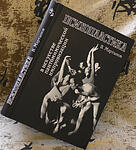

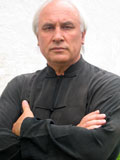 Коан – вопрос к членам Федерации Юн Чун Цюань от президента В.В. Мартынова: «Что Вы сделали для Федерации из того, что не мог бы сделать любой другой за деньги?»
Коан – вопрос к членам Федерации Юн Чун Цюань от президента В.В. Мартынова: «Что Вы сделали для Федерации из того, что не мог бы сделать любой другой за деньги?»
